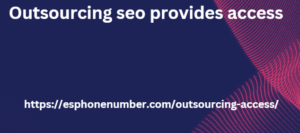The United States, a vast nation with diverse landscapes and a sprawling population, utilizes a system of area codes to streamline phone communication. Unlike some countries with a single national code, the US employs a decentralized approach, assigning unique three-digit codes to specific geographic regions. Understanding American city codes can be crucial for making domestic calls or receiving them from abroad.
Decoding the System: Area Codes and Their Purpose
Area codes were first introduced in 1947 to manage the growing number of phone lines across the US. As phone usage surged, a single national code wouldn’t suffice. Area codes enabled efficient routing of calls, ensuring calls reached the intended location within a specific region.
Here’s how it works:
- The National Code: All phone numbers in the US begin with the country code +1. This signifies a call is being placed to or from the United States.
- The Area Code: Following the country code comes the three-digit area code. This code identifies a specific geographic region within the US. There can be multiple area codes within a single state, depending on population density. For instance, California, a populous state, has numerous area codes, while Wyoming, with a smaller population, has just one.
- Local Phone Number: The final seven digits Outsourcing seo provides access represent the local phone number, unique to a specific subscriber within the area code’s designated region.
Finding the Right Code: Resources and Strategies
Given the multitude of area codes, navigating them can be tricky. Here are some helpful resources:
- Online Directories: Websites like [area code list] or phone Collaborations between Finnish and Foreign Businesses company directories allow you to search for area codes by city, state, or ZIP code.
- Reverse Phone Lookups: If you receive a call from an unknown number, reverse phone lookup services can potentially reveal the area code’s location (be cautious of free services, some might not be reliable).
- Mobile Phone Overlays: With the rise of mobile phones, some regions have implemented overlays, assigning additional area codes alongside existing ones to accommodate the growing number of phone lines.
Beyond City Limits: Special Codes and Considerations
The system extends beyond traditional city codes. Here are some additional codes to be aware of:
- Non-Geographic Numbers: Toll-free numbers (typically starting with 800, 855, 877, 888) and premium-rate numbers (often starting with 900) have designated area codes but don’t correspond to specific geographic locations.
- Area Code Overlays: As mentioned earlier, overlays assign new area codes to regions with existing codes, sometimes leading to confusion. In such cases, the local phone number needs ten digits (including the area code) to complete the call.
The Future of American City Codes: Mergers and VoIP
The traditional landline system is evolving with the rise of Voice over Internet Protocol (VoIP) technology. VoIP calls often bypass traditional area codes, relying on internet connectivity for communication. However, for the foreseeable future, area codes are likely to remain a crucial part of the American phone infrastructure.
In conclusion, understanding American city codes simplifies phone communication within the US and from abroad. By utilizing online resources and staying informed about overlays and special codes, navigating this system becomes easier. As technology continues to evolve, the future of area codes might involve a blend of traditional systems and internet-based solutions.
